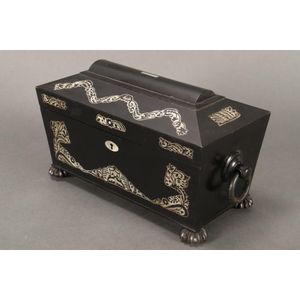
Regency Mother of Pearl Inlaid Tea Caddy
Good Regency sarcophagus tea caddy, in ebonised wood, inlaid with scrolling floral motifs in mother of pearl, opening to a fitted interior with central bowl, flanked by removable lidded canisters, the whole raised on four lobed bun feet and flanked by…
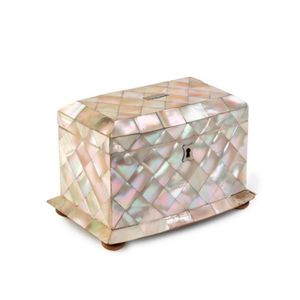
Regency Mother-of-Pearl Tea Caddy (English, 1830)
A Regency mother-of-pearl tea caddy, English circa 1830, 11 cm high, 17 cm wide, 12 cm deep
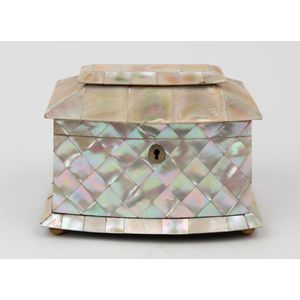
Georgian Mother of Pearl Tea Caddy with Bone Handle
A Georgian mother of pearl tea caddy, with bone handled lidded interior compartments, 14.5 cm high, 20 cm wide, 12 cm deep
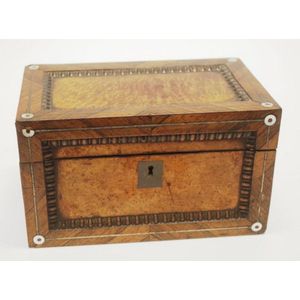
Walnut Tea Caddy with Mother of Pearl Inlay
19th century walnut tea caddy with mother of pearl inlay and reed moulding
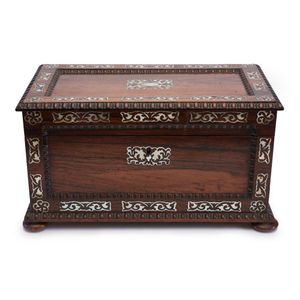
Victorian Anglo-Indian Mother-of-Pearl Tea Caddy
A Victorian Anglo-Indian tea caddy mid 19th century, of rectangular form, with carved beading to the edges of the lid and base, mother-of-pearl inlaid throughout, the hinged lid enclosing a fitted interior of two rectangular tea canisters with hinged lids…

Victorian Mother-of-Pearl Tea Caddy with Ivory Accents
A Victorian mother-of-pearl and abalone tea caddy, the exterior decorated in traditional checkerboard design, the lid opens to reveal two lidded compartments with ivory knobs, the rim and feet also of ivory. 12 cm x 8.5 cm x 10 cm
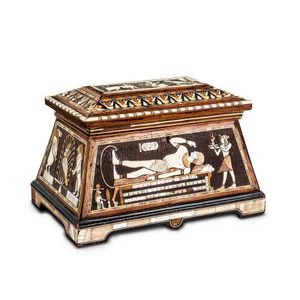
Egyptian Revival Tea Caddy with Marquetry Inlay
An Egyptian revival bone and mother of pearl marquetry inlaid sarcophagus top tea caddy, 18 cm high, 28 cm wide, 18 cm deep
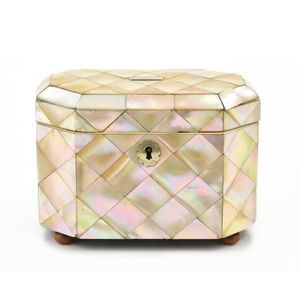
Hexagonal Mother of Pearl Tea Caddy with Original Key
A fine mother of pearl of tea caddy, the hexagonal in form, with diamond shaped mother of pearl inlay, opening to a single original lid, supported by four bun feet, accompanied by the original key, 10 x 14 x 8.5 cm
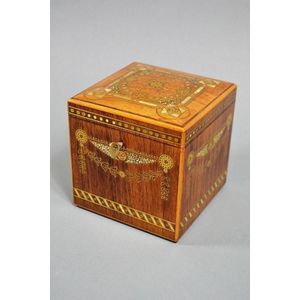
Antique Brass & Mother of Pearl Inlaid Tea Caddy
Fine antique small brass & mother of pearl inlaid box / tea caddy, with key, approx 12.2 cm square
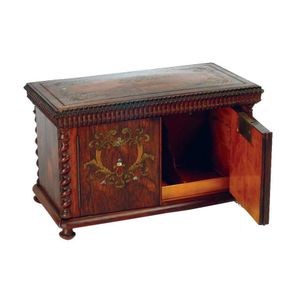
French Mother-of-Pearl Inlaid Tea Caddy with Brass Floral Designs
A late 19th century French 'The' (tea) caddy, the hinged lid inlaid with cut brass floral designs and inlaid mother-of-pearl florets framing 'The' in script, the front with similar cartouches inlaid to two small hinged doors; barley twist haft-columns…
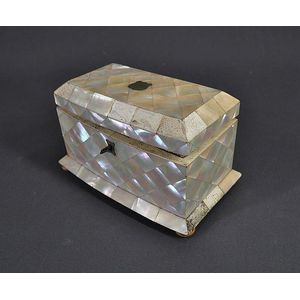
Victorian Mother of Pearl Tea Caddy with Internal Compartments
Victorian mother of pearl tea caddy. Two internal mother of pearl lidded compartments. Losses to exterior. As inspected. Height 22 cm. Length 20 cm
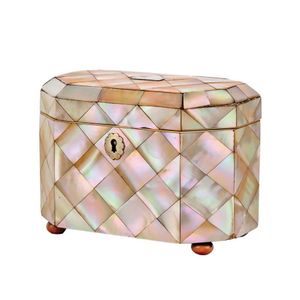
Mother of Pearl Octagonal Tea Caddy, Circa 1850
A fine mother of pearl octagonal tea caddy, English, circa 1850. 10 cm high, 15 cm wide


 Loading more...
Loading more...